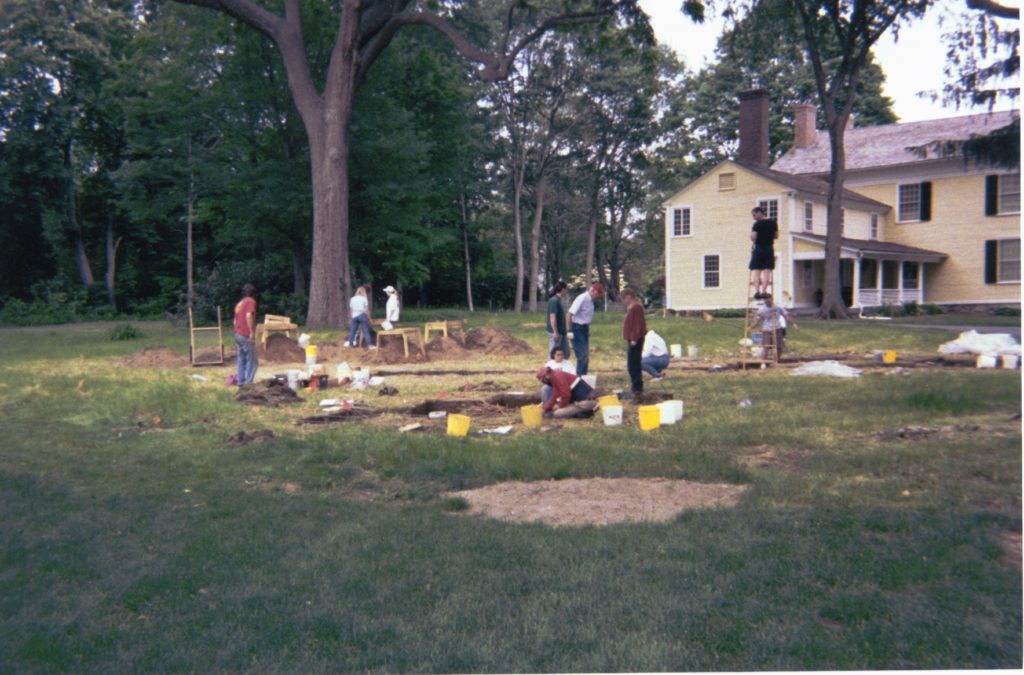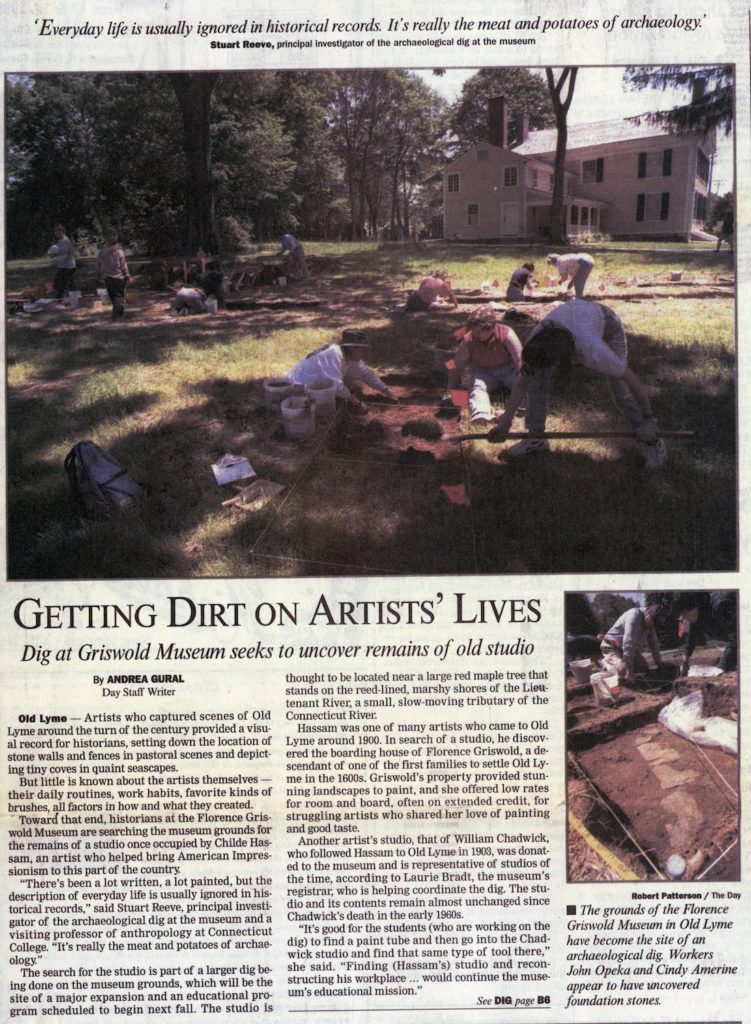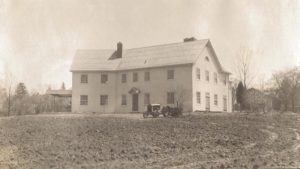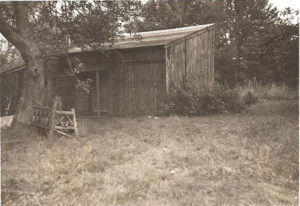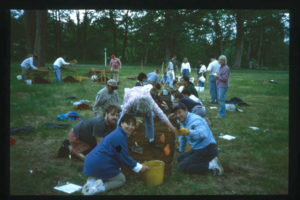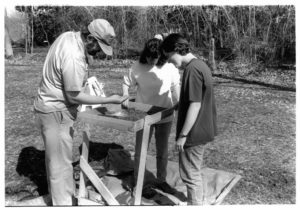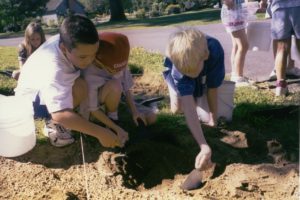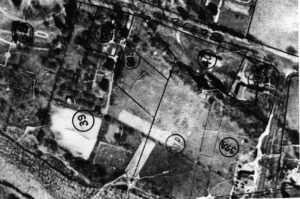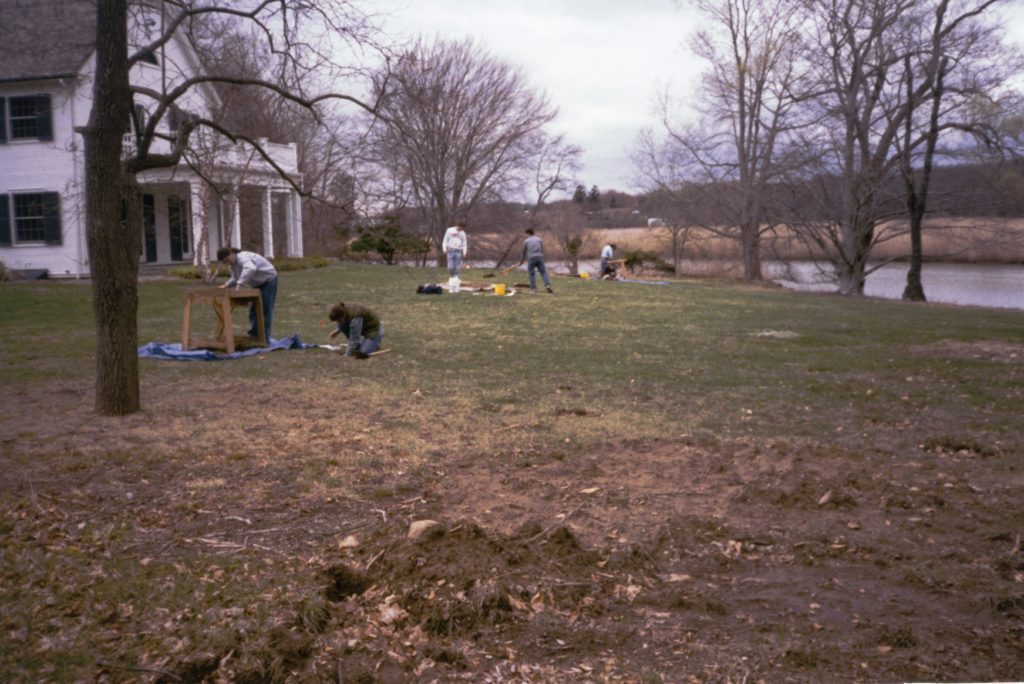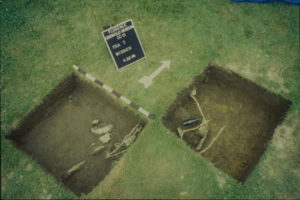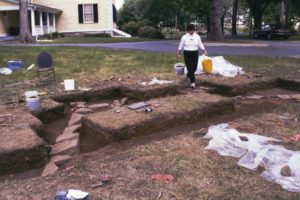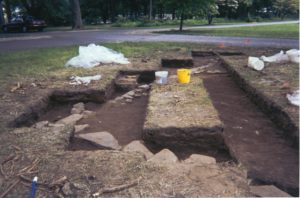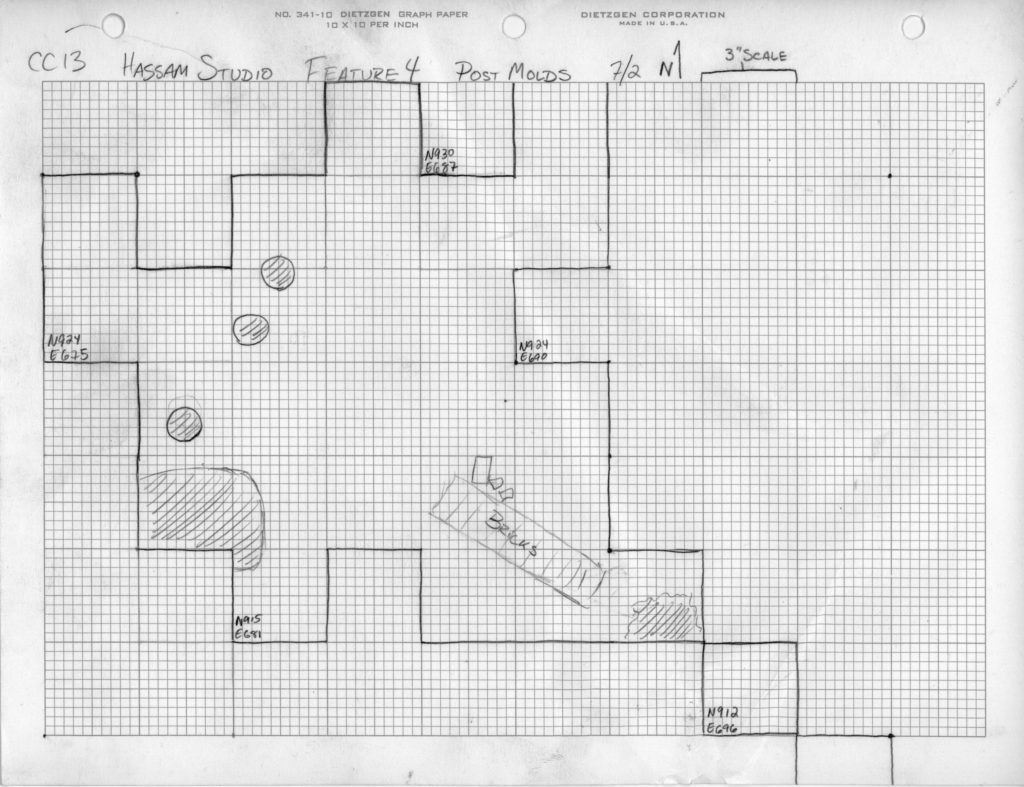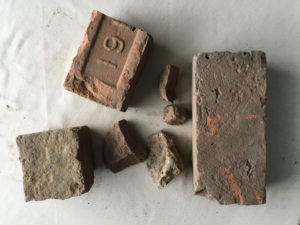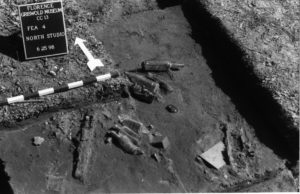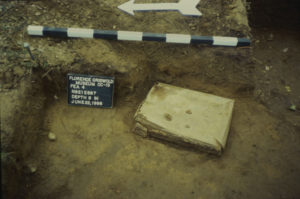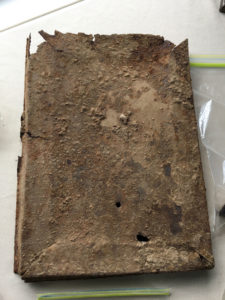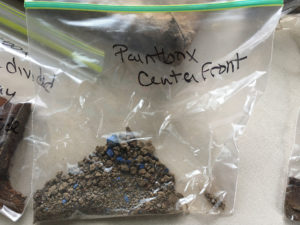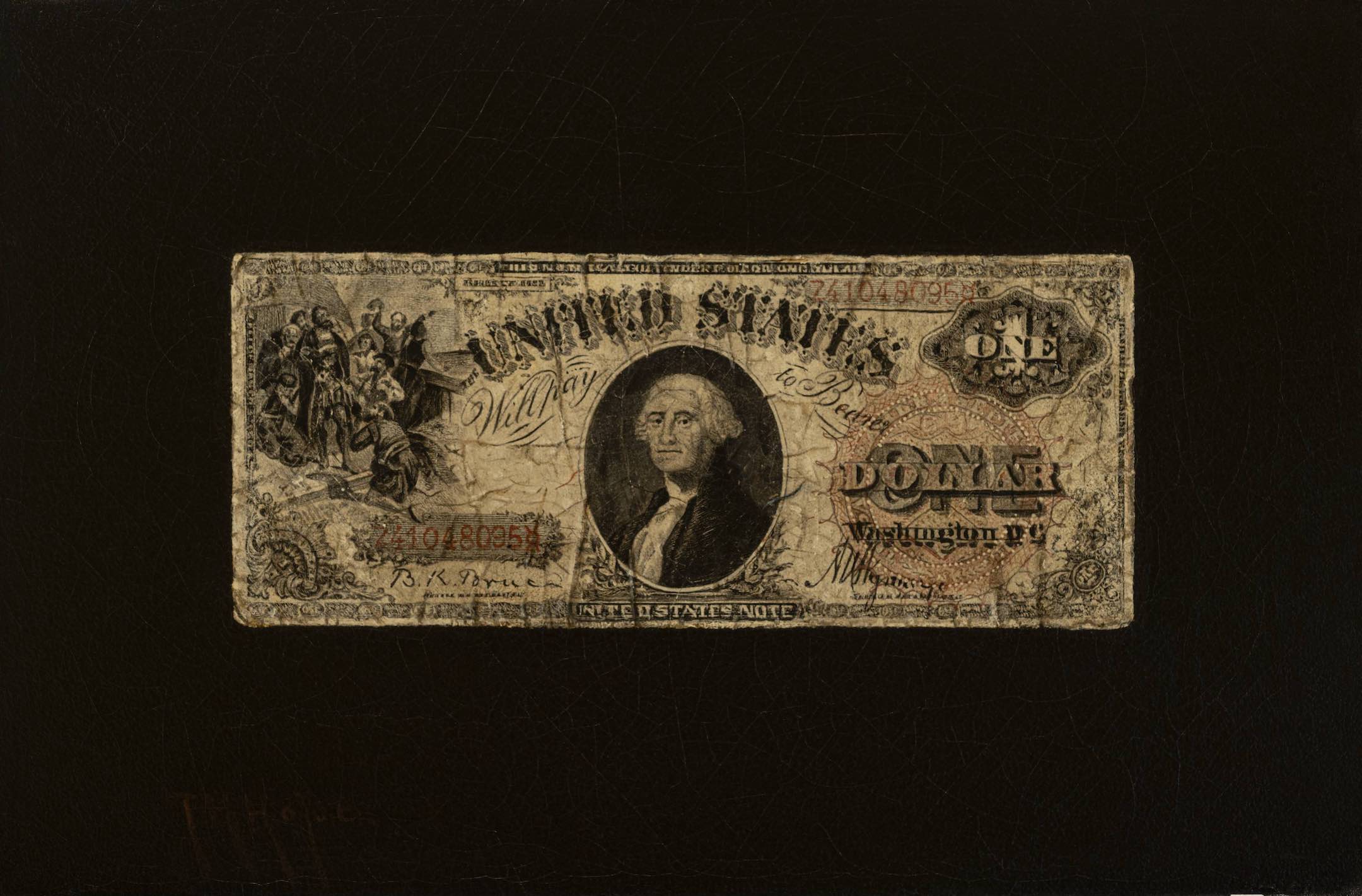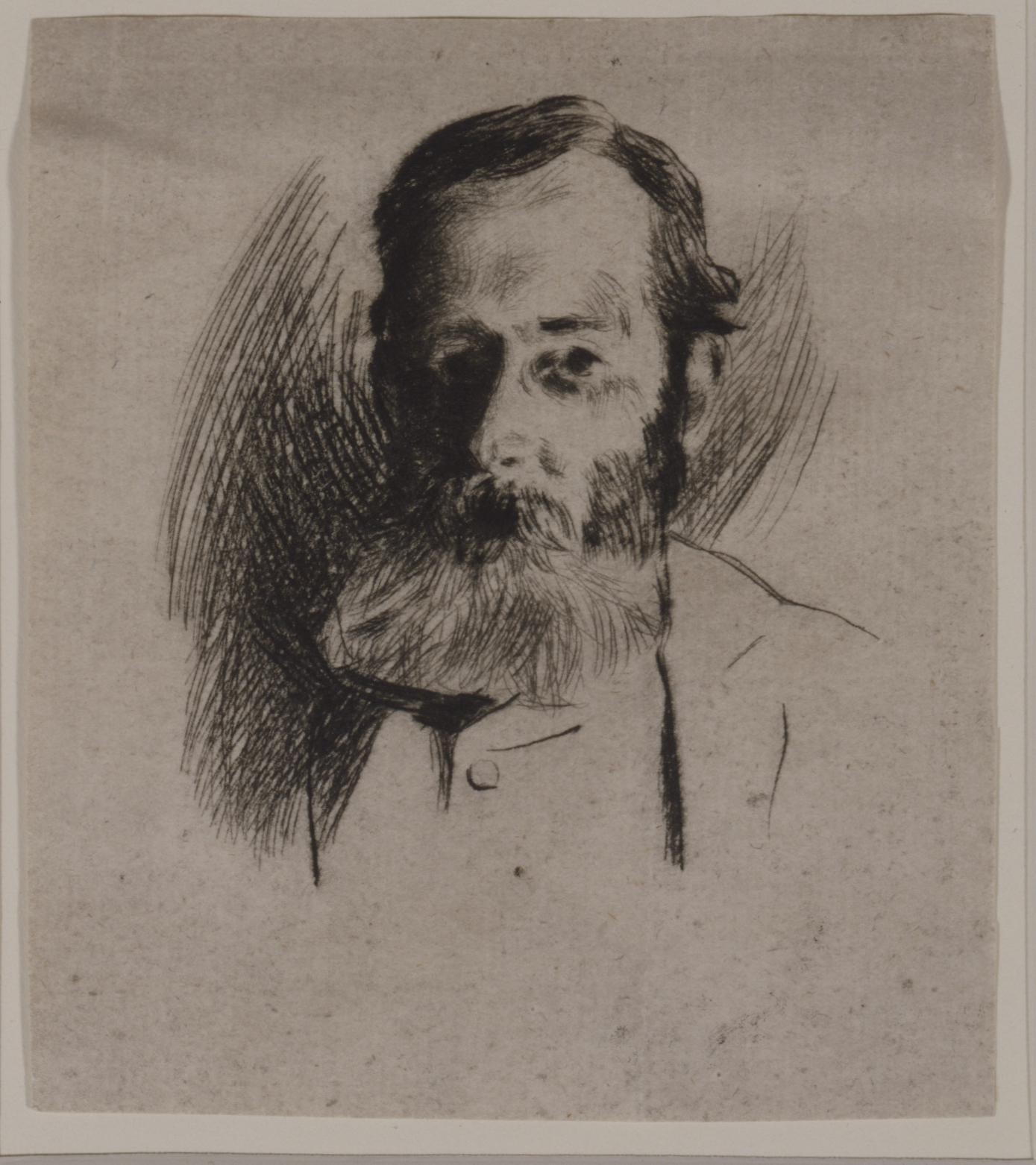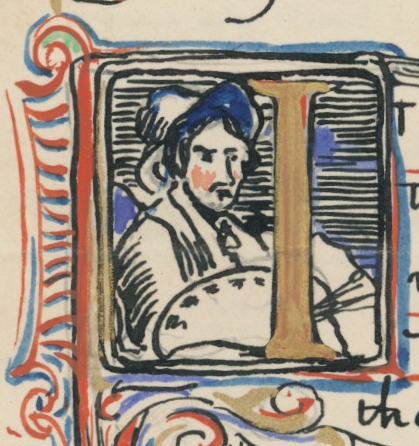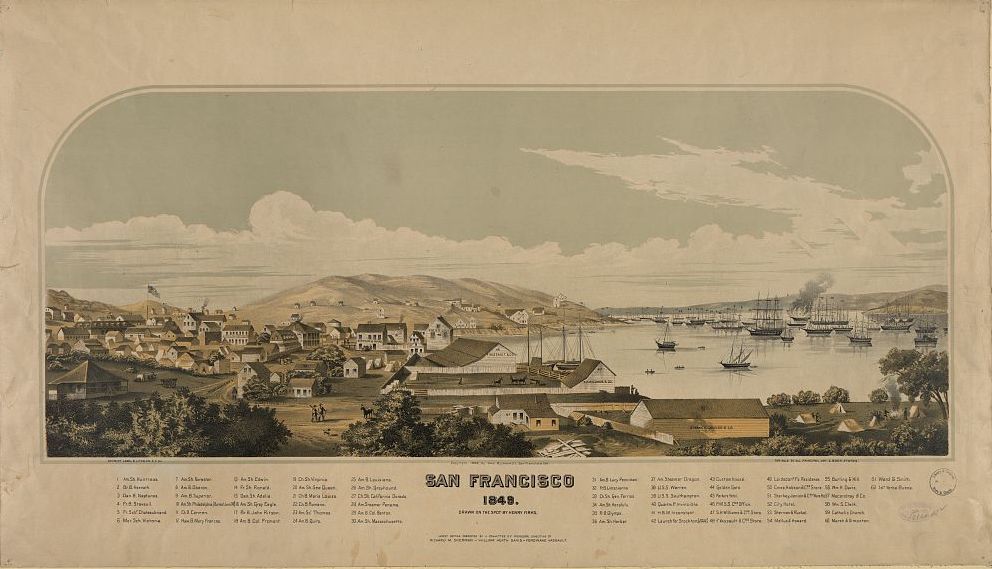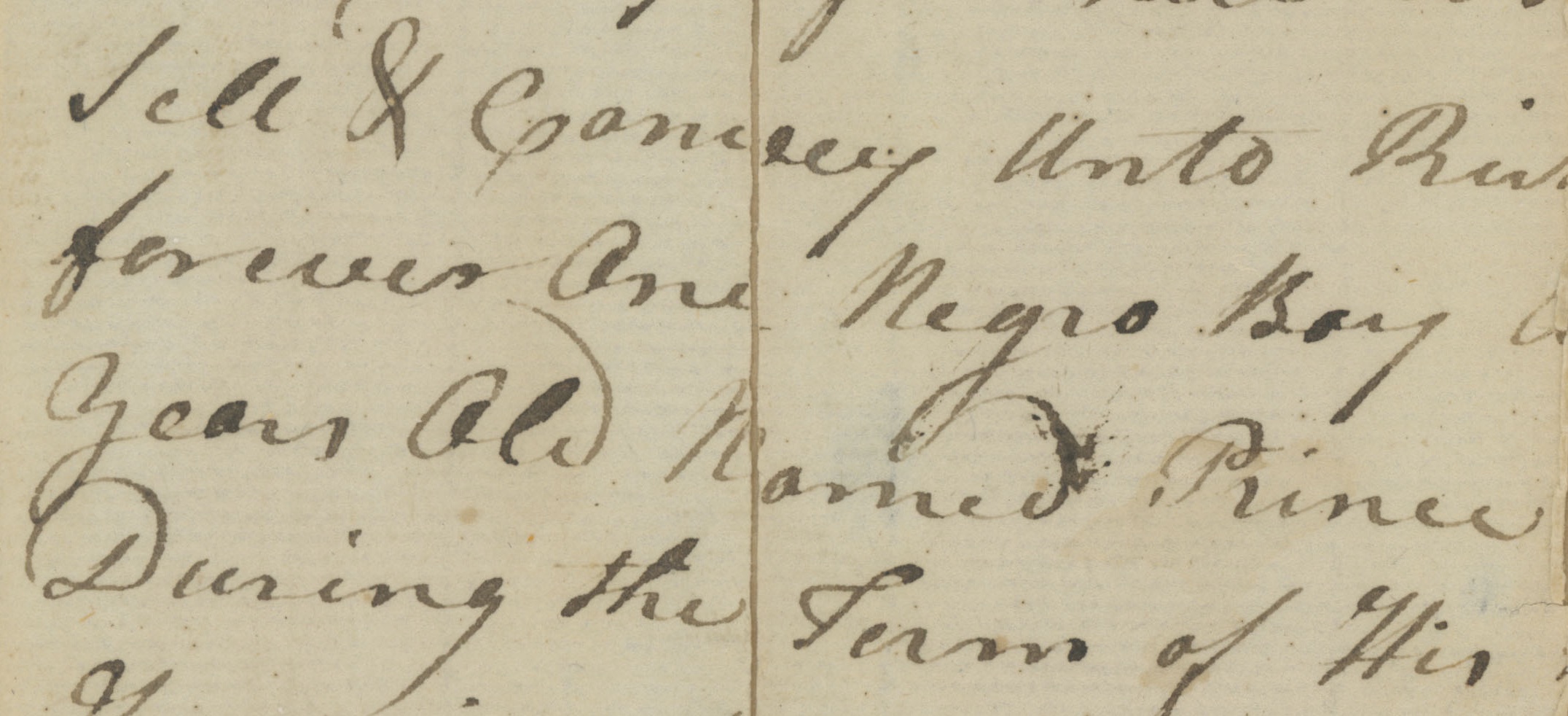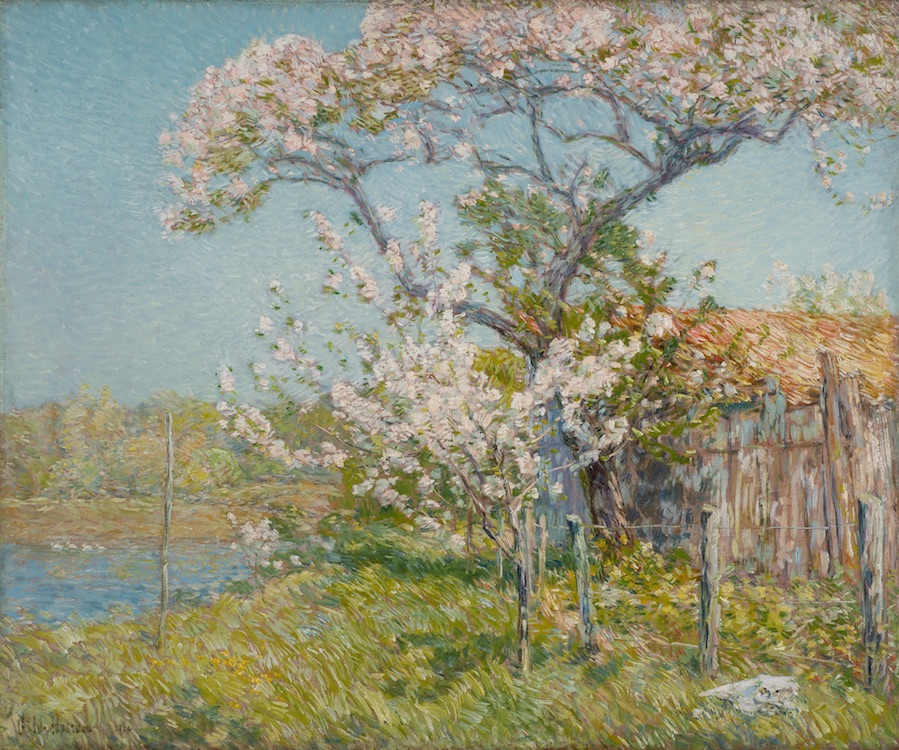
by Laurie Bradt
Featured image: Childe Hassam, Apple Trees in Bloom, Old Lyme, 1904. Oil on wood, 25 x 30 in. Florence Griswold Museum, Gift of the Vincent Dowling Family Foundation in Honor of Director Emeritus Jeffrey Andersen, 2017.16
It is difficult for me to believe 20 years have gone by since I stood on the lawn behind the Griswold House, trowel in hand, with a group of undergraduates and museum volunteers eagerly investigating the buried remains of the historic property once owned by Florence Griswold and inhabited by the artists who formed the Lyme Art Colony. The enthusiasm of the group was contagious. Director Jeff Andersen would check in daily to see the progress, Director of Education and Outreach David Rau got down into the trenches to participate, members and trustees stopped for a visit and oftentimes stayed the entire day.
Searching for the barn, 1998. 1998 Archaeological Dig Collection, Lyme Historical Society Archives at the Florence Griswold Museum
Discoveries were met with yells of excitement, photographs were taken, and the media even stopped by for interviews. Never before had I participated in a field project that garnered so much attention. But why wouldn’t it? The Griswold House—Florence Griswold Museum/Lyme Historical Society—was a well-known historic landmark and a popular tourist destination. And anyone interested in history has to admit they have a little bit of Indiana Jones in them. Exciting work, sure, but more importantly, results that helped guide the Museum to formulate a Landscape Master Plan that is being executed and opened to the public this summer as part of the Robert F. Schumann Artists’ Trail.
The Day (New London, Connecticut), June 12, 1998. Clipping, 1998 Archaeological Dig Collection, Lyme Historical Society Archives at the Florence Griswold Museum
The project began in 1998 after the FGM had acquired the land behind the Griswold House known, at that time, as the Ubelacker property. It was originally part of the Griswold estate, but had been sold off in 1936. Plans were underway to renovate the Marshfield house on that land and design a new gallery and collections storage facility.
Marshfield just after construction, spring 1937. Private collection
As part of a comprehensive historic research study, and knowing my background was in historical archaeology, Director Jeff Andersen asked me if I would coordinate an archaeology project with the hopes of locating the footprint of the original “East” barn behind the Griswold house, recovering information on the historic landscape, and clarifying the location of any artists’ studios, most notably, Childe Hassam’s.

Childe Hassam outside his studio on the Griswold property, 1904. Photographs: Lyme Art Colony, Lyme Historical Society Archives at the Florence Griswold Museum
Studio as it appeared in 1937. Private collection
I jumped at the chance and immediately enlisted the aid of Professor Harold Juli, archaeologist Stuart Reeve, and the Connecticut College summer archaeology field school class. I also put out the call to the membership for volunteers and was overwhelmed with a wonderful group who showed up religiously throughout the summer to assist with the dig, and also to work with me in the “Lab” cleaning, sorting, identifying and cataloguing hundreds of artifacts that were recovered every day.
Staff and volunteers at work, 1998 Archaeological Dig Collection, Lyme Historical Society Archives at the Florence Griswold Museum
Aerial photograph showing Griswold property, 1929. Copy print. 1998 Archaeological Dig Collection, Lyme Historical Society Archives at the Florence Griswold Museum
Historical archaeology uses a variety of resources to locate and identify sites that no longer exist. We began the project by searching the Lyme Historical Society Archives for information that would help flesh out our directives. We examined photographs and letters, we looked at deeds, wills, and land records. We studied aerial photographs of the property taken in 1929 and we read countless recollections by artists who had stayed at the Griswold House. Arthur Heming’s book Miss Florence and the Artists of Old Lyme (1971; reprinted 2013) proved an invaluable resource, as did Childe Hassam’s and other artists’ letters to Miss Florence. Equally important were the many paintings of the property capturing those moments in time, documenting the art colony as it was—Hassam’s Apple Tree’s in Bloom and Hoffman’s Childe Hassam’s Studio, for example.
Shovel test survey near Marshfield. 1998 Archeological Dig Collection, Lyme Historical Society Archives at the Florence Griswold Museum
The first phase of the project was a shovel test survey conducted in the spring of 1998. In total, we dug 105 test holes at 10 to 25 foot intervals over the 5.6 acres of property. We located concentrations of metal hardware and nails that could be attributed to a potential historic structure. We also found pieces of ceramics and other household items located near the rear of the Griswold House, the barn location, and in spots out in the west yard. The items that got us really excited were paint tubes, chips of pigment, and other painting-related items. The concentrations of artifacts allowed us to plan the larger excavations in those areas that we believed would provide the most information.
Midden, 1998 Archaeological Dig Collection, Lyme Historical Society Archives at the Florence Griswold Museum
Stone foundation of the East Barn, with the Griswold House in the background (top) and looking southwest (bottom). 1998 Archaeological Dig Collection, Lyme Historical Society at the Florence Griswold Museum
Phase 2 involved hand-digging over 120 excavation units from which we recovered over 16,000 artifacts. We located a kitchen trash pit and well near the rear of the Griswold House. We revealed the buried stone foundation of the East Barn (now the Hartman Education Center) and with it several pieces of painting-related artifacts, confirming that the barn was also used as a studio. Excavation units to the north of the barn attempted to locate the footprint of Miss Florence’s gardens and associated pathways. We excavated the area below the garden and southwest of the existing barn in the hopes of locating outbuildings and artists’ studios.
Map of Hassam studio findings, 1998 Archaeological Dig Collection, Lyme Historical Society Archives at the Florence Griswold Museum
Guided by the early aerial photograph as well as art colony photographs and paintings, we began excavating an area in the northwest corner of what was presumed to have been the apple orchard. This seemed the most likely location of Childe Hassam’s studio. We initially found a linear stack of 36 bricks stamped with the date 1919, and deduced that these probably corresponded with a period of structural repair of the building. Painting supplies and other artifacts were abundant around the bricks, which seemed to establish the south wall of the structure. Other foundation features were few with the exception of a wooden sill along the west side of the building.
Bricks excavated from the Hassam studio (top); bottles under the studio sill (bottom). 1998 Archaeological Dig Collection, Lyme Historical Society Archives at the Florence Griswold Museum
Beneath the wooden sill was a series of wine and liquor bottles placed with their necks facing outward, as if someone had hidden them under the studio in the crawl space. The highlight of the discoveries was a fully intact, rusted metal paint-box on the inside of what would have been the north wall. The box measures 14 x 9.5” and is almost identical to the one on display in the Chadwick Studio. It contained 12 paint tube fragments, 11 tube caps, and 33 pigment fragments. Other artifacts such as paint knives, palettes, brushes, India ink bottles, an easel fragment, and varnish were discovered throughout the site. Remains of an iron stove, ceramics, and kerosene lamp chimneys were some of the household items located. In all, 3,525 artifacts were recovered just from this studio site. Sadly, the skeletal remains of a dog were found at 18” in depth. While no single artifact could clearly be identified as belonging to Childe Hassam, they do show that this building was used by several artists, both men and women, and represents one of the treasures of this historic landscape.
Paintbox and paint residue found during Hassam studio excavation. 1998 Archaeological Dig Collection, Lyme Historical Society Archives at the Florence Griswold Museum
I was proud to be the staff member that provided the expertise to lead this project, and also proud of the many students and volunteers who put in hundreds of hours toward this endeavor. The archaeology project clearly demonstrated that significant, irreplaceable information is preserved on the Museum property and, with careful stewardship, it can be treasured by visitors for many years to come.
Laurie Bradt is the former Registrar of the Florence Griswold Museum
Thanks to intern Isabelle McDonald for her assistance with this blog post.

